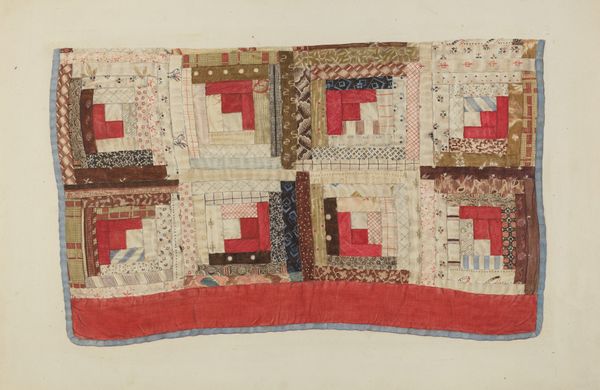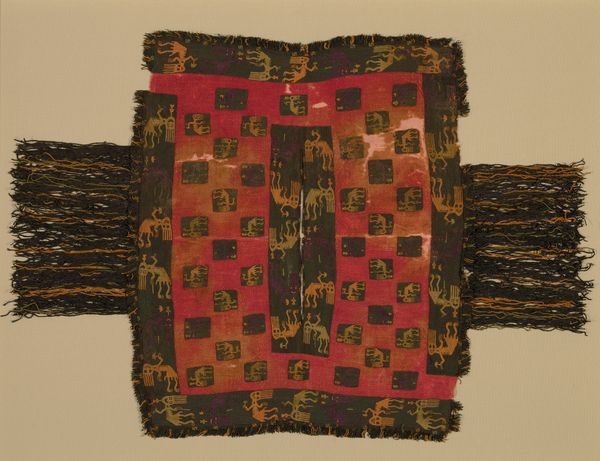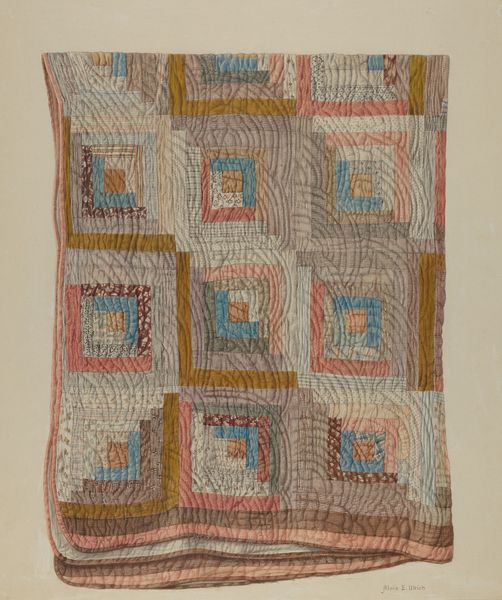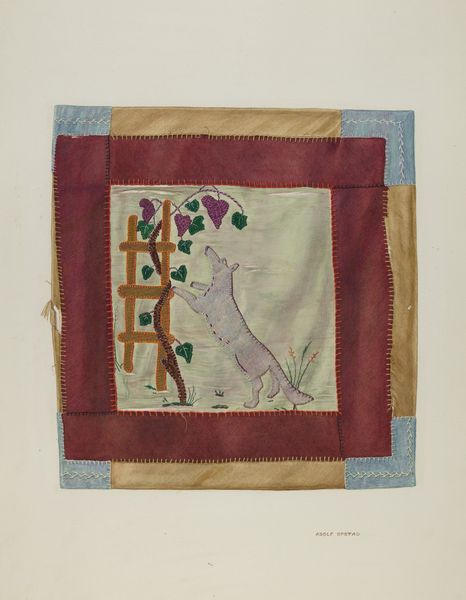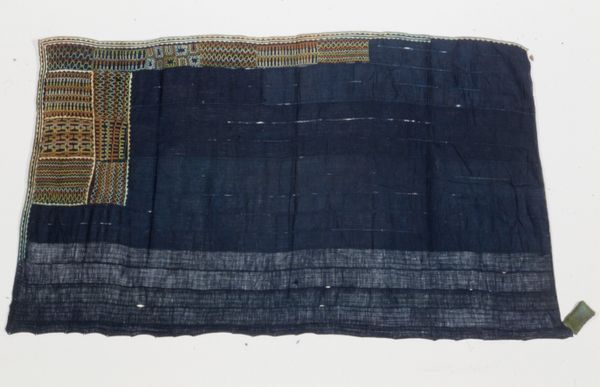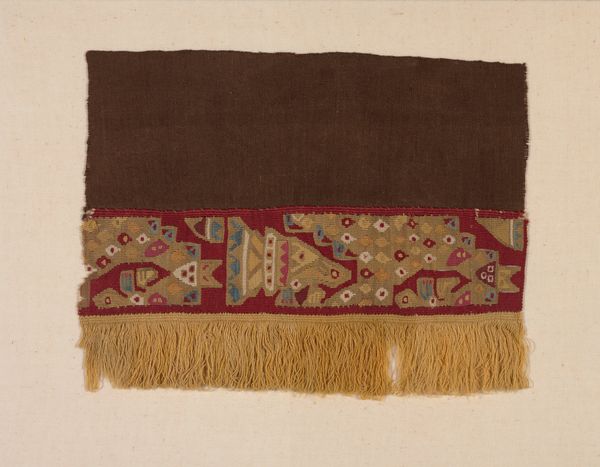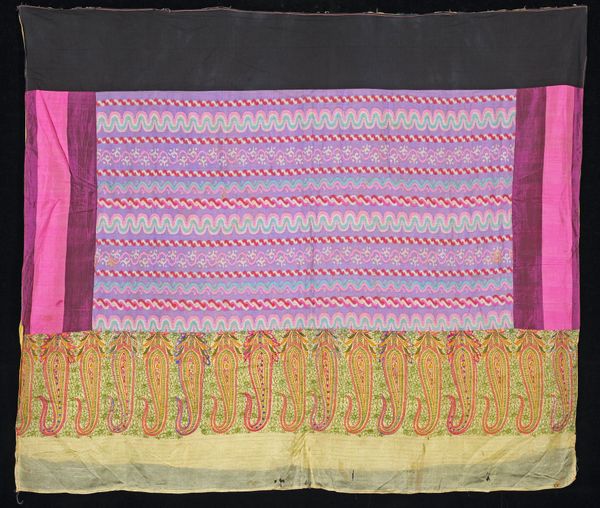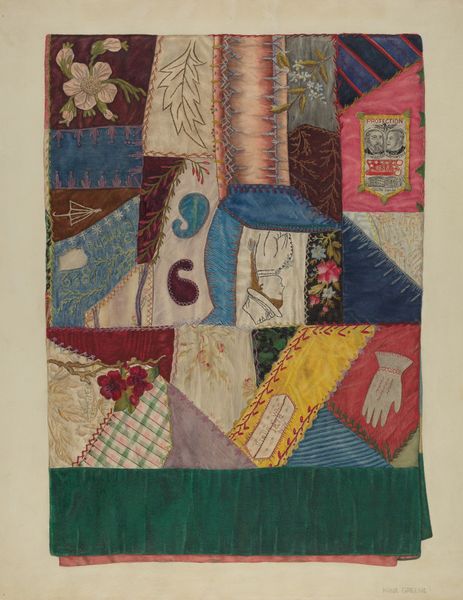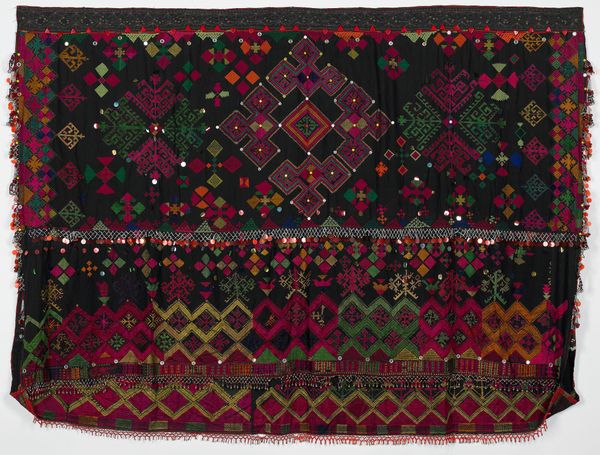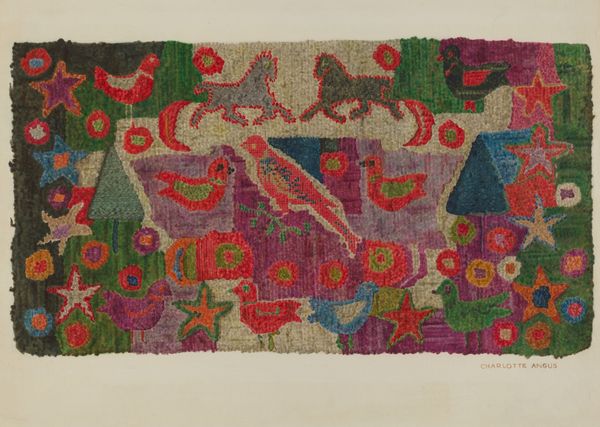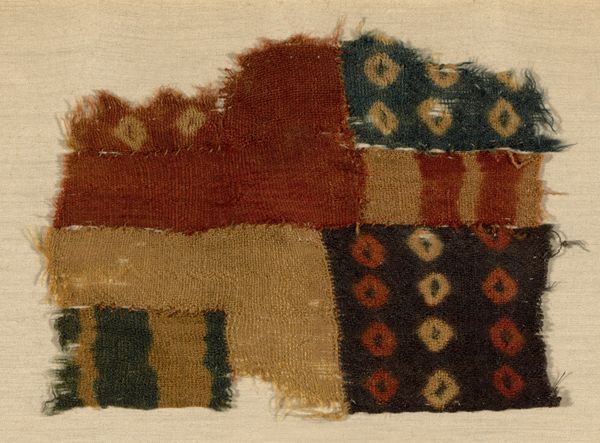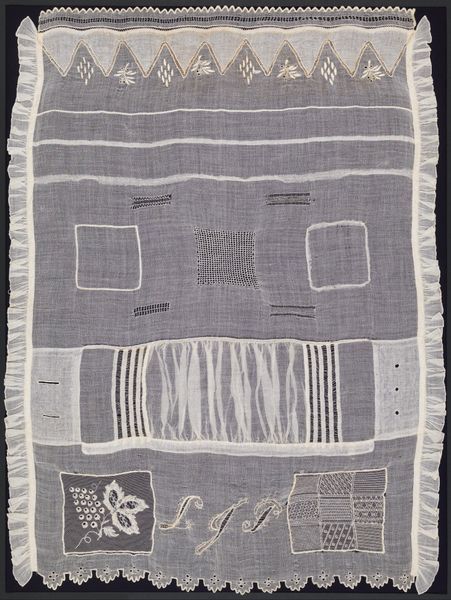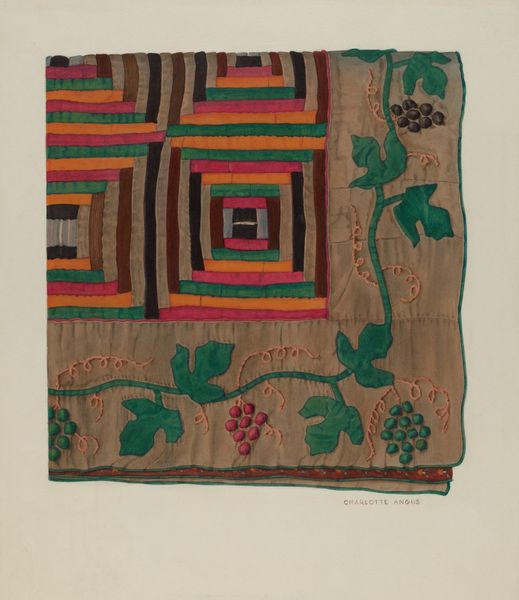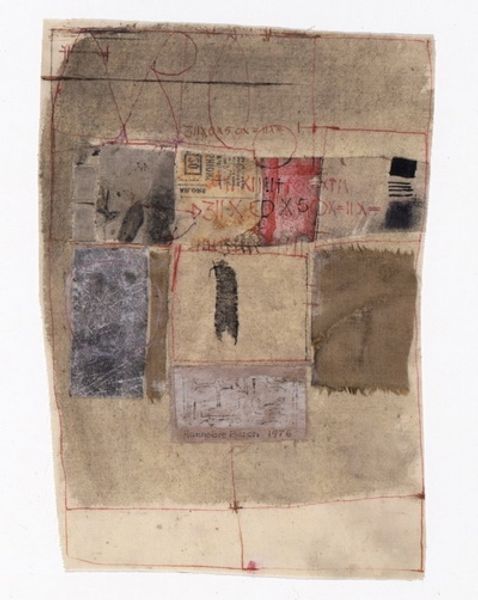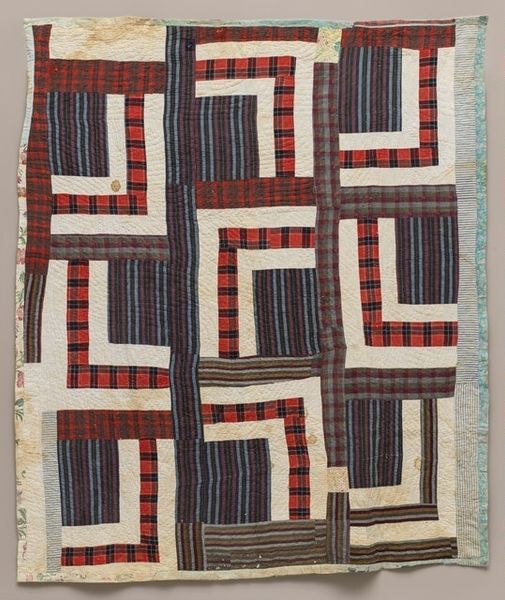
Copyright: Geta Bratescu,Fair Use
Curator: Today we are looking at "Remnants," a mixed-media collage and assemblage by Geta Bratescu created in 1978. It incorporates textile, gouache and other materials. What's your first impression? Editor: Immediately, it feels like a coded memory, a fragmented map perhaps? The color palette, especially the blues and earth tones, evokes something elemental, almost geological. I’m seeing symbols wanting to be read. Curator: I’m struck by the way Bratescu repurposes materials. These are scraps, remnants, as the title suggests, elevated through the act of artistic labor. The textile pieces she has combined were cheap remnants of textile manufacturing she accumulated during a trip to a textile factory. It's interesting how she creates a commentary on value. Editor: Yes, and those fragments— the checks, the florals, the solid blocks— each one whispers of a previous life, a discarded purpose. Doesn't the red peeking out at the top suggest a rupture, or a raw emotion trying to break through the composed surface? It's emotionally complex. Curator: I think it is very significant to notice Bratescu uses assemblage during the communist era of Romania. The scarcity of materials under Nicolae Ceaușescu certainly influenced her artistic choices. Everyday life revolved around finding ways to reuse everything. The collage, this form, becomes a direct result of historical conditions, social experiences that informed the choices she made and transformed them. Editor: So, the very act of collecting and assembling becomes a quiet act of resistance, of preserving what remains. I see patterns recurring across different cultures; weaving, mending – the preservation of memory woven directly into cloth. This assemblage touches something very deep. Curator: Indeed, the piece is very representative of her work that pushes the boundaries of traditional mediums while at the same time embracing abstraction in an intimate way. Editor: Seeing the different patterns in this assemblage is akin to experiencing memory. Fragmented, vivid, tactile, deeply connected to the self. Curator: Understanding the historical and material conditions under which Bratescu was working only enriches my understanding of this powerful work. Editor: It has truly unveiled hidden meanings and illuminated broader cultural threads within me.
Comments
No comments
Be the first to comment and join the conversation on the ultimate creative platform.
